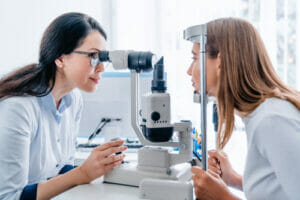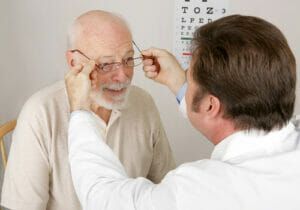It may seem like it’s challenging to keep up with all your yearly doctor’s appointments. But you know it’s something you need to do to stay healthy.
You may remember to see your dentist for annual cleaning and your primary care doctor for your physical every year, but do you do the same with your yearly eye exam? Just like it’s essential to have your health checked every year, the same is true when it comes to keeping your eyes healthy.
Many people put off seeing their eye doctor, whether they wear glasses or contact lenses to see or not. But scheduling regular, comprehensive eye exams aren’t only a way to make sure your prescription is up-to-date.
Your eye exams can save you from permanent vision loss. Keep reading to learn more about why eye exams are so crucial to having healthy eyes!
The Importance of Eye Exams

Having eye exams is for both people who need to have their prescription updated and those who have no visual problems. In other words, regular eye exams are something that everyone should be doing, no matter your age.
Older adults, primarily those over the age of 40, should be especially vigilant about their eye health even if they’ve had no problems in the past. But no matter your age, you should have your eyes checked out at least every one to two years. Seeing an eye doctor regularly will allow any eye-related conditions to be identified and treated early.
Whether you’re a child, adolescent, adult, or a senior, you need to have regular eye exams. But for older adults, regular eye exams can be necessary to save your vision.
Several age-related eye conditions cannot be cured, including glaucoma, macular degeneration, and diabetic retinopathy. When damage to the eye occurs from any of these eye conditions, it’s irreversible.
But if you catch them early enough, it’s possible to manage them, allowing vision loss to slow down or to stop further damage to the eye from occurring. The trouble with these conditions is that in their early stages, they don’t exhibit any symptoms.
The only way to catch them early is to see an eye doctor regularly so they can monitor your eye health.
How Often Should You Go to the Eye Doctor?
There’s no doubt that eye exams are necessary, but how often do you need to see your eye doctor? People who don’t need to wear glasses or contacts and don’t have any known vision conditions should go to the eye doctor at least every two years, unless their eyes are still developing, meaning they are under 18.
You should see an eye doctor every year if you’re over fifty, even if you don’t need to wear glasses or contact lenses. If you have a refractive error like nearsightedness, farsightedness, or astigmatism, you should also see an eye doctor yearly to keep up-to-date with your prescription.

Certain risk factors may increase your risk of developing an age-related eye condition. If you’re over 40 and present any of these factors, you may need to see an eye doctor yearly.
Even if you’re under 40, if several of these risk factors apply to you, you may want to see an eye doctor more frequently. These risk factors include:
- Having a family history of eye disease
- Diabetes
- Heart disease
- High blood pressure
- Poor nutrition
- UV damage to the eyes
- Tobacco use
- Heavy drinking
- Use of corticosteroids
If you’re unsure what category you fall into, talk to your eye doctor. They should understand your complete medical history.
They can recommend the best schedule for how often you need to have eye exams. If you know that it’s been over a year since your last eye exam, you should consider seeing an eye doctor sooner than later to keep your eyes healthy.
Having an Up-to-Date Prescription
If you have a refractive error, you should see your eye doctor at least every year to stay up-to-date with your prescription. Your eyesight is subject to change, and having a current prescription will help you see better.
Addressing Persistent Issues

In addition to having regular eye exams, see your eye doctor if you have any visual problems or if you’re experiencing general discomfort. One commonly overlooked condition is dry eye syndrome, which can be mistaken for allergies.
If you find that your eyes constantly feel dried out or like they have grit in them even though they’re clean, you should see your eye doctor. There are ways to treat dry eye syndrome, so you don’t have to live in discomfort.
You may also experience visual problems due to cataracts. Cataracts are more common in adults over the age of 40, but you may not know you have them at first.
You can have cataracts removed, although cataract surgeons only recommend getting cataract surgery once your cataracts begin to affect your quality of life. If you have regular eye exams, your eye doctor should be able to diagnose your cataracts as soon as they start to form.
Keep an eye out for symptoms like blurriness, poor night vision, light sensitivity, and increased glare from light, as these can be signs that your cataracts have become advanced.
If you experience any eye discomfort or vision problems, it’s always good to see your eye doctor and have your eyes checked out just in case. Often, there’s something your eye doctor can do to help, so you don’t have to put up with poor vision or discomfort.
Be sure to see your eye doctor both for regular checkups and whenever you have any concerns about the health of your eyes. Staying up to date on eye exams can mean the difference between healthy eyes and missing a grave eye condition.
Unsure when you last saw an eye doctor? Fix that by scheduling an eye exam at Sierra Nevada Eye Center in Reno, NV, today!


